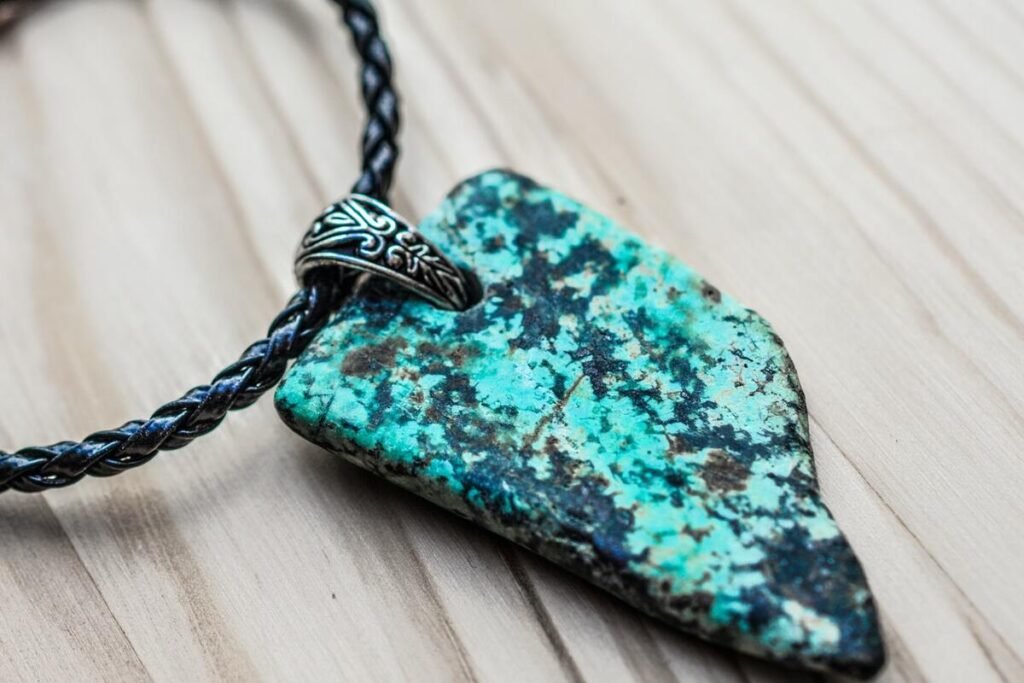Sometimes, an entire history can be in the palm of one’s hand, in the form of a ring, a bracelet, or a necklace. This is how Native American jewelry functions. They serve as a reminder of the kinds of practices and meaning-making, sealed in each design.
Understanding Native American Jewelry’s Importance
If you are looking to buy a piece of jewelry created by indigenous Americans, it’s good to know the story behind these handcrafted gifts. This helps give more meaning to the gift for yourself or your loved ones.
History of a Culture
For Native Americans, stone- and shell-shaping to be used for worn adornments has been a practice since the 8,800 BC.
In American Indian history, jewelry held a specific use, which was for signifying social class. Tribes typically traded jewelry with each other, which resulted in varied styles but similar looks. With the Spanish’s entry into their territory, they brought silversmithing as a practice. This boosted jewelry-making among Native Americans, allowing them to use it fully as a practice for trade.
Afterward, other Europeans came to America and brought beads. This expanded their styles to incorporate beadwork. By the 1900s, native American tribes started selling jewelry to tourists in the area.
Nowadays, the types of metals and precious stones that they use in jewelry-making have expanded. They have also started to use machines for metals like steel and titanium, to ensure quality and accuracy in design. Such make up what we regard as native American jewelry history.
What is the difference between Navajo and Zuni jewelry?
For most people, two types of Native American jewelry stand out. Some may ask, “What is Native American jewelry called?” The short answer is that it is any kind of jewelry that comes from indigenous jewelry makers who have been inspired by the techniques that have been passed on to generations.
They come from the Zuni and the Navajo people. Some may assume that the differences have more to do with preference than technical. In reality, their styles differ to reflect certain aspects of their ways.
Navajo jewelry
The striking turquoise stone embedded in silver may be the trademark of this jewelry. The Navajo tribe has been creating Indian jewelry of this style since the 19th century, using the silver that the Spaniards brought to their lands.
In as early as 1860, the Navajo tribe has been practicing the art of silversmithing. They first used coins melted down to create jewelry and other silverware. From here, the early silversmiths, including Atsidi Sadi, said to be the first ever Navajo to learn the craft, moved to adding gems.
Those with an eye for this type of jewelry will know that Native American jewelry turquoise is one of the most iconic looks. Turquoise, as an addition to Navajo jewelry appeared first in the 1880s. Reports state that they sourced their turquoise gems from the Santo Domingo tribe. The 1920s also brought in tourists to the area, so the local Navajo Indians started creating jewelry to serve as souvenirs. This resulted in the turquoise and silver combo that has become one of the most popular Native American jewelry today.
Zuni jewelry
Another popular kind of jewelry is lapidary work, which the Zuni tribe is known for. This style differs from the Navajo’s signature jewelry because it involves the setting and inlaying of stones to metal.
Inlay settings have a very particular technique. The creator lays the stone side by side or uses the channel inlay approach where there is silver between the stones. They can also fabricate the pieces, though this adds on to the burden of the style.
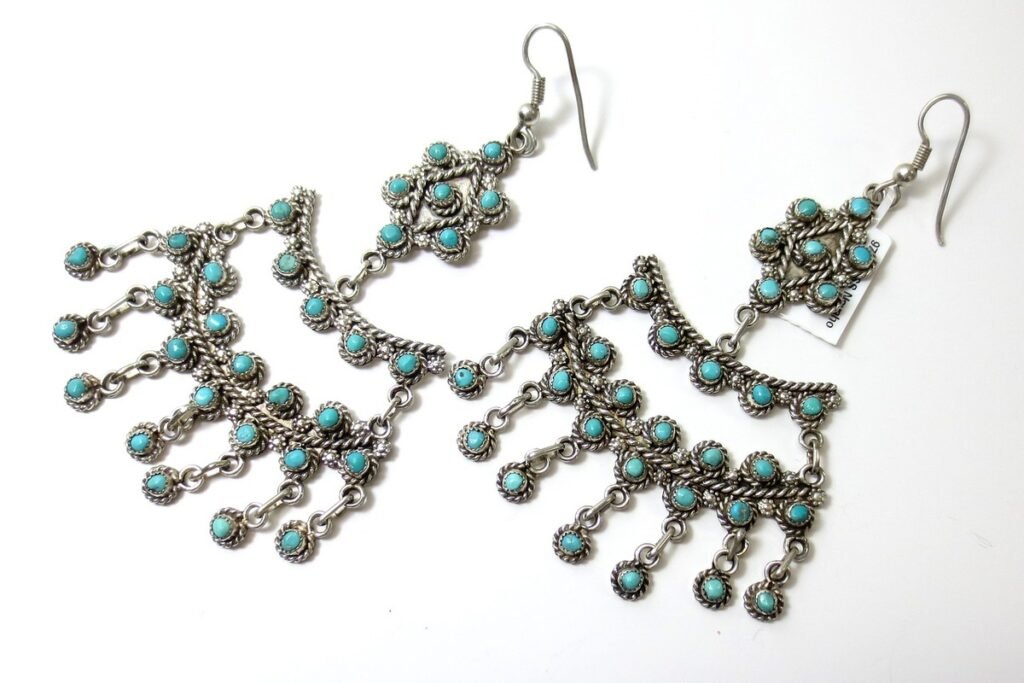
Zuni jewelry also differs from Navajo jewelry in that they are not limited to using turquoise or only one stone in their designs. Some of the inlay stones used include red coral, mother of pearl, black jet, and the occasional turquoise gem.
Some designs even carry significant meanings that pertain to the tribe’s culture. For instance, the use of black and white stones reflect the duality of things. Some colors like red and blue stones, take from nature’s own hues, such as the earth and the sky. Additionally, according to its olden Native American jewelry meaning, the Zuni jewelry used to be exclusive to tribes people. Their lapidarists would create for the Native American people, but with budding talent, they grew into tradesmen especially during the 20th century.
Native American jewelry Cherokee
Because they are situated near copper mines, the early Cherokee jewelry makers already used this metal for jewelry. They used the cold-hammer approach, especially when using copper to forge other things, including weapons, tools, and utensils.
Besides copper, traditional Cherokee jewelry also used gold and silver. Other natural materials also became the main materials. The Europeans supposedly brought more to the mix, bringing in colorful beads, which were incorporated into Cherokee jewelry.
Types and Styles of Native American Jewelry
Despite the similarity of some styles, Native American jewelry features different techniques to create a variety of jewelry. Many jewelry makers already use these techniques. Most of the time, craftsmanship and inspiration can differ depending on the maker.
It’s good to note that even though Native American jewelry can be classified as such, there is no need for similar outcomes. The meaning imbibed in each jewelry piece is what makes it authentic and inspired.
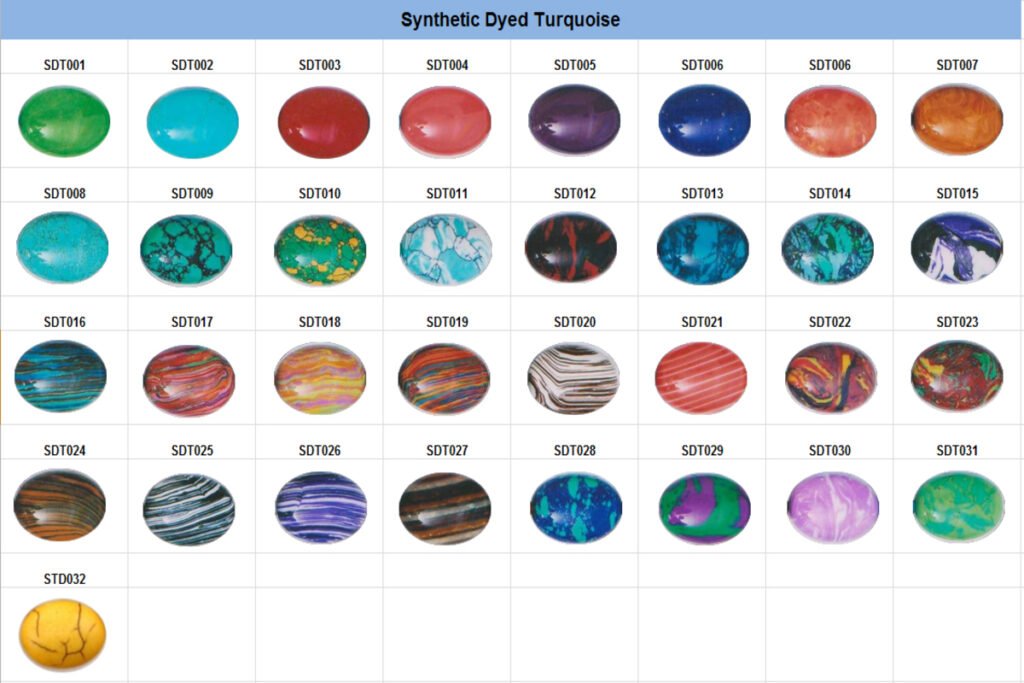
Single or multi-stone jewelry
Most indigenous American jewelry maker makes use of stone and metal in their creations. Regardless of the actual kind of jewelry, they can have a single stone or multiple ones created to form various patterns.
Native American jewelry makers may have their favorite stones to work with. But other natural materials like opal, calcite, Mother of Pearl, and malachite also made their way into this kind of jewelry. In some cases, jewelry makers can use different types of stones in a single jewelry piece.
Clustered stone
Geometric patterns appear to be a common inclusion in Native American jewelry. Because some tribes specialize in working with both metals and stones, they can create beautiful pieces using the clustered technique.
What Native American artists can do is find beautifully colored stones and arrange them in non-linear patterns. Because a lot of the stones are not of the same size, sometimes the clustered jewelry can have a one-of-a-kind feel.
Multicolored stone
If you have ever seen a Native American jewelry sporting different types of stones on a single piece, don’t worry about its authenticity. Native American jewelry makers use different colors of stone to create the Rainbow.
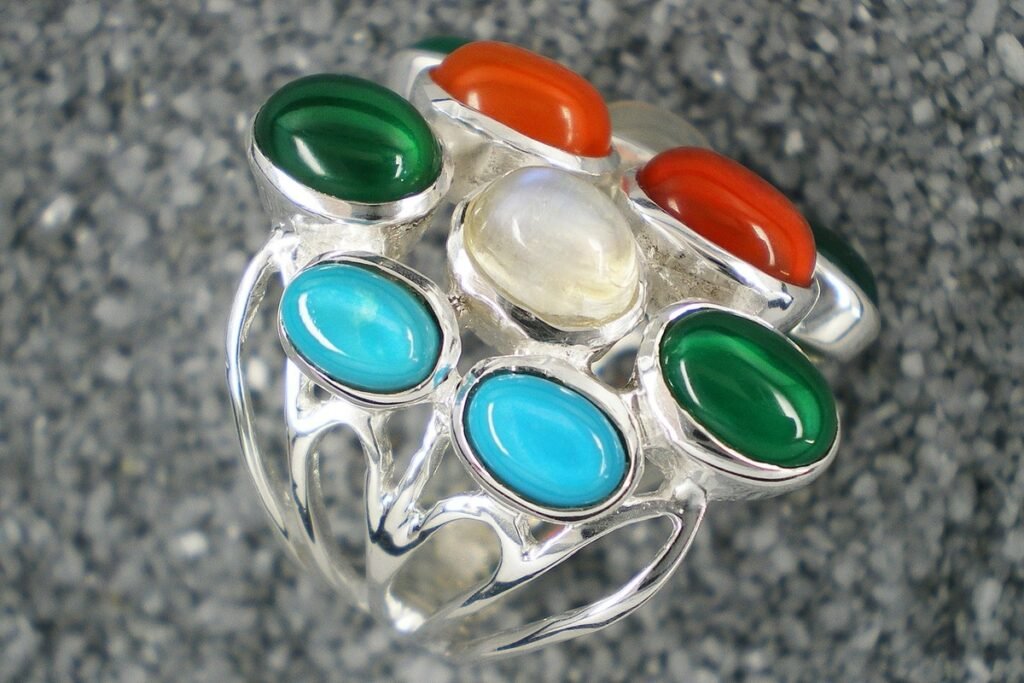
Some may ask, “What stones are used in Native American jewelry?” The quick answer is that they use whatever is available in the environment. Depending on accessibility, some jewelry makers can create intensely colored rainbow pieces or stick with three colors rotated within the piece.
Sandcast jewelry
As the name suggests, sandcasting uses sand to create molds. Even when working with a cast, it takes a skilled jewelry maker to accomplish each piece This is why the artist’s capabilities is also a huge factor, not only in the finished product but also in the schedule of production.
The Navajo tribe is best known for this technique and combining it with silversmith pieces. What sets sandcast jewelry apart from other Native American jewelry designs is that it has a matte finish. Best of all, if you are wondering “How can you tell if Native American jewelry is real?” especially for those that use molds, sandcast jewelry has a good history. It is said that one is very likely to get a unique design because the mold is destroyed after every piece is created. This makes a sandcast jewelry you own pretty much just the only one from its mold.
Inlays
Just because Native American jewelry follows a certain style does not mean the same products are created over and over again. When it comes to using inlay style of making jewelry, this technique is beneficial if you want more freedom in your design.
Native Americans use three types of inlay styles. The common inlay creates various designs by combining exactly-cut stones into specific patterns. Another technique is channel inlay, where the jewelry maker cuts the stones in various geometric patterns before fitting them with metal strips in between each stone to create a unique design.
More recently, stone to stone inlay has been introduced has received a more modern jewelry-making approach. Stones are shaped in a perfect fit to the stone beside it in the design, secured only with stone epoxy. The finished product can have varied patterns, which can be embedded with colored stones for some distinctive design
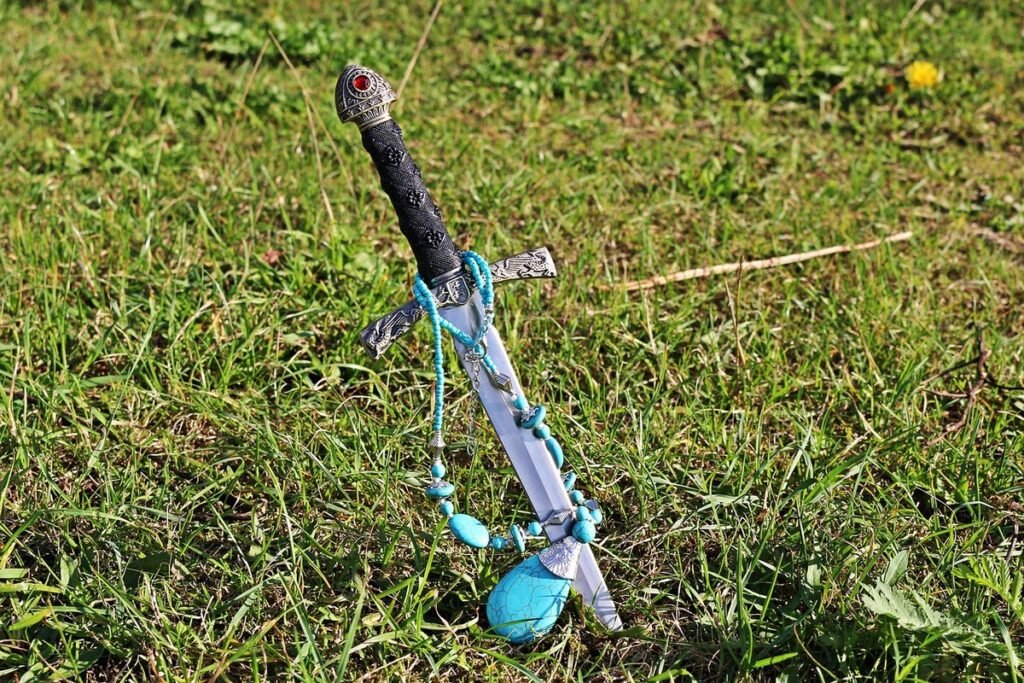
Overlays
Native Americans’ skill at metalwork shines with overlays. This style seals two metals together, creating patterns formed from using the layers of dimensions cut in some metal layers. Geometric patterns dominate vintage Native American jewelry styles. But there are other styles, such as the storyteller overlay.
This type of overlay shows a full story, whether it is a story of a period or the progress of a people. The storyteller overlay works best with cuffs and bracelets because it can show progress as etched in the band.
Shankwork
Beyond intricate stonework and beadwork, Native American jewelry design can also have a vast range. For instance, silver wire shanks allow for limitless designs using the layering and weaving of metals. For the most part, shanks form bangles, which can either be worn as stacks or crafted into a thicker band.
Stampwork
Native American jewelry makers also use metal stamps in forming unique designs. How it works is that they take specific tools, such as flathead screws and other similar mediums repeatedly. This forms unique designs, which can create geometric and symmetrical patterns.
Note that because these are done by hand, most designs can be called a one-off because the exact look and mark may not be the same even with other similar designs. Consider this personalization as one of the main allures of the work. These Native American jewelry marks not only symbolize authenticity but also the years of experience that the maker has in crafting these pieces.
Meanings of Native American Jewelry
While modern society uses jewelry as adornments and trinkets to accentuate one’s fashion sense, Indigenous Americans used jewelry for different purposes. In fact, jewelry is a highlight of the culture. Its designs and symbols have come to contain meaning that can be of benefit to its owner.
Stones symbolizing values
Precious stones are a big part of Native American jewelry. Just as birthstones and other types of gems carry significant meaning, the same goes for this kind of jewelry. When used in this context, a lot of the precious stones are geared towards protection, good fortune, courage, calming, luck, and integrity.
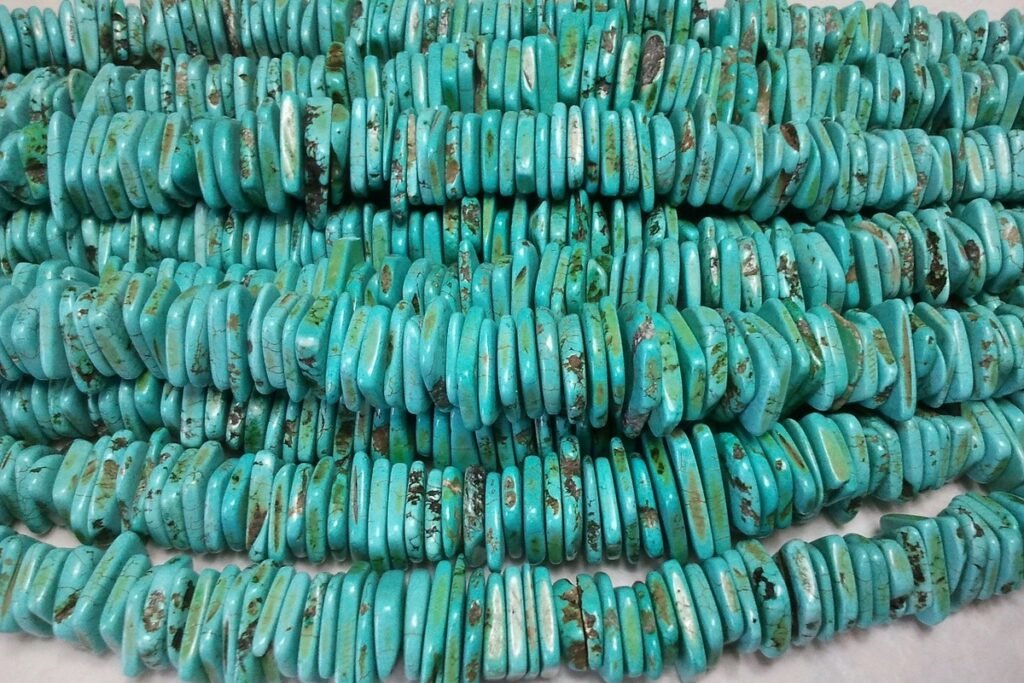
Squash blossom shape
The inverted crescent shape has often been equated with beauty, as opposed to what others believe that its linked to spirituality. This shape has been used in many Navajo jewelry pieces. Some even use beads as a way to enhance the design. The beads mimic the petals in the way they extend from the base going outside.
Shapes of gods and animals
Shaped jewelry in pendants and earrings also carry significant meanings. Native American jewelry have pendants and pieces shaped like gods, such as Kokopelli or animals like the hummingbird, bear, or spider. These hold meanings or even values that are attributed to the animal as interpreted by the culture. Interestingly, just as animals can become guardians, they also hold different symbols in Native American culture.
Arrows
Arrows have been a staple in Native American jewelry design. In modern aesthetics, these have also found their way into modern jewelry. The position of the arrows actually changes the meaning. Arrows facing different directions pertain to war, whereas crossed arrows mean friendship. A broken arrow means peace. When choosing an arrow design, it’s good to know the meaning behind them as well.
If you want to know more about unique jewelry in different places like Bali, check out “Unique Jewelry: Why Bali Jewelers Are Known For Good Trinkets.”
